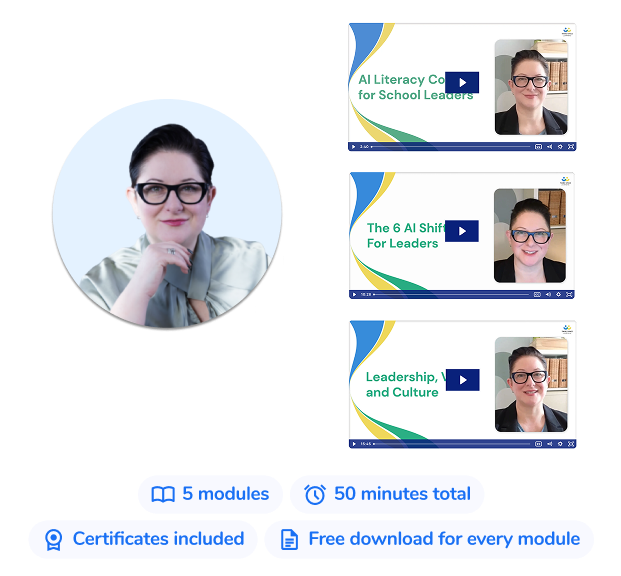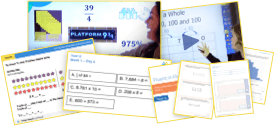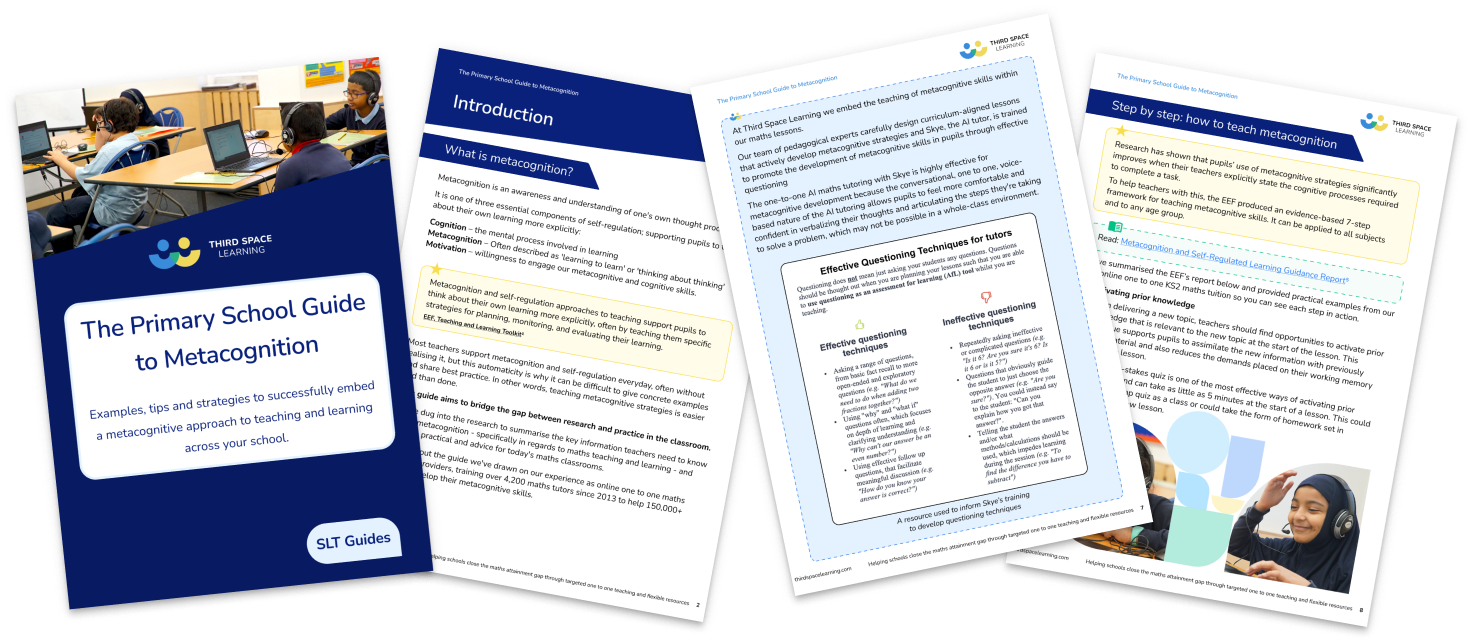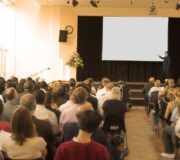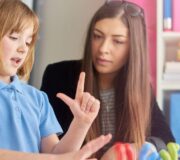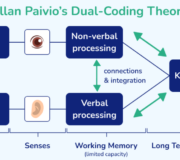Why Independent Learning Skills Are The Secret To Success At Secondary School And How You Can Teach Them
Independent learning is when learners have control and autonomy over their own learning. Independent learners have the ability to organise their learning and revision. As such,it is an important part of being successful at secondary school and beyond.
In this blog, maths expert and former secondary school teacher Christine Norledge shares her insights on the importance of independent learning and how to develop independent learning skills in your secondary school students.
What is independent learning?
Independent learning is when learners make active choices to manage their studies with a degree of autonomy. They are encouraged to take ownership of their learning and be in charge of their own research, time management, and academic performance.
To achieve this, learners employ metacognitive learning strategies to manage and organise their learning. They need to be aware of how they learn best, where they learn best – their learning environment – and then how to adapt their process autonomously.
Examples of independent learning skills
Independent learning is a subset of independent learning skills that are applicable to secondary education. This can include learning that:
- Proactivity rather than passivity – students attempt to seek answers from a variety of sources when they get stuck, rather than defaulting to asking the teacher (or just not doing the task);
- Making informed choices about the best methods for learning and revising – students need considerable guidance with this as generally they select weaker, easier methods;
- The application of metacognitive strategies – in a nutshell, learning how to learn. Again, this may need to be explicitly taught and practised;
- Emotional regulation, including the ability to self-motivate, self-regulate, deal with setbacks and appreciate the need for delayed gratification.
The Primary School Guide to Metacognition
A step by step guide to teaching metacognition across your primary school. Includes 10 practical strategies for the classroom.
Download Free Now!What does independent learning look like in the classroom?
Independent learning is often used to talk about work completed outside the classroom – i.e. they’re completing the work independent of the teacher’s input and help. This can include homework and other independent study tasks completed on online learning platforms.
The adjective “independent” can be used to describe tasks completed by students in lessons, usually to practise a particular skill they’ve just learned – but there’s a sense here in which although the practising is independent, the learning isn’t really. There is still an element here of teacher control – tasks are (generally) set by the teacher, and when students are using online platforms, they’re often directed by either the teacher or through the AI of the platform itself.
However, if we want students to develop independent learning skills, this scaffolding and direction does need to be gradually removed. Students need a degree of autonomy in selecting what learning activities to complete and which topics to work on – again, acknowledging the constraints of a standard secondary classroom. We look in more detail below about some strategies you can use in the classroom to achieve this.
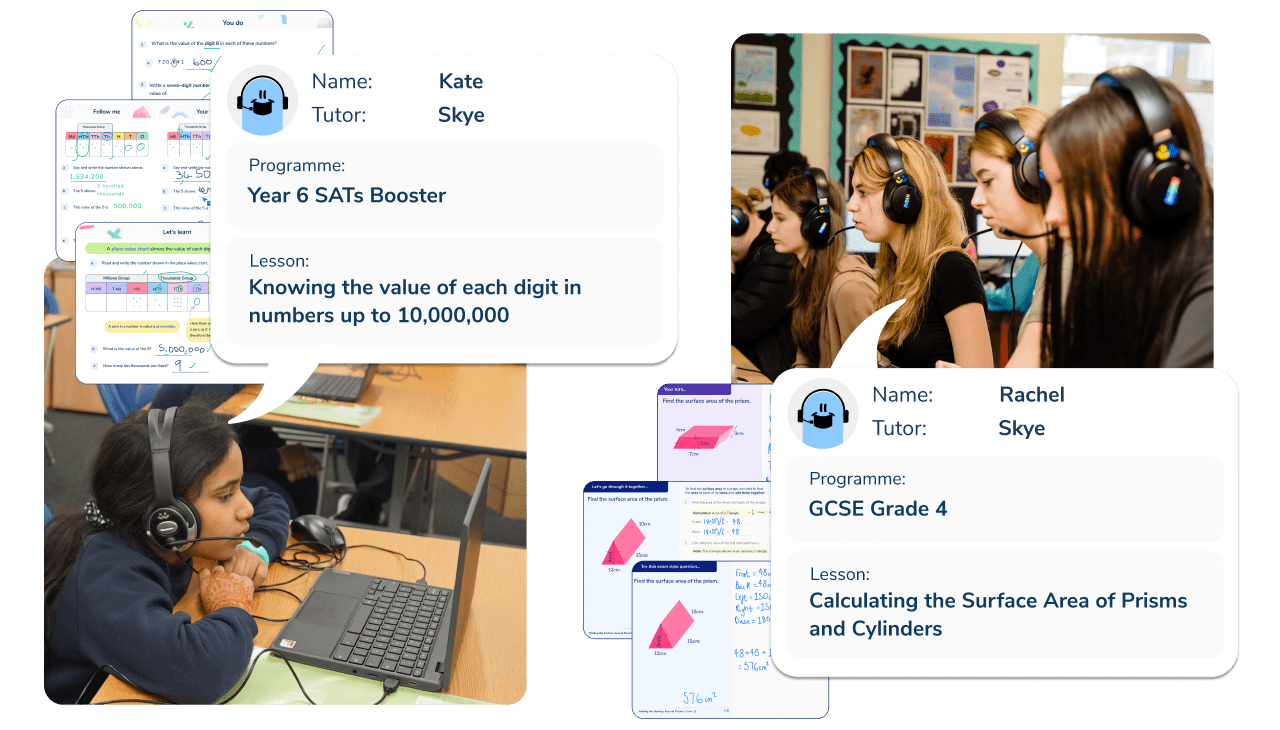
Meet Skye, the voice-based AI tutor making maths success possible for every student.
Built by teachers and maths experts, Skye uses the same pedagogy, curriculum and lesson structure as our traditional tutoring.
But, with more flexibility and a lower cost, schools can scale online maths tutoring to support every student who needs it.
Watch Skye in actionWhat are the benefits of independent learning?
The benefits of independent learning for students are that it:
- Provides a greater understanding of how they learn, which can be applied to knowledge and skills that need to be learned after their formal schooling (such as learning a skill required to complete a job);
- Establishes personal effective learning processes – if students are not dependent on a teacher or tutor to guide them, they can use their time proactively on strategies that work well for them;
- Develops skills in managing their own time and workload – again, a useful transferable skill beyond formal schooling, enhancing employability;
- Increases ownership of learning for students, leading to increased self-motivation and reduced stress levels;
- Provides a strong grounding in independent learning and study skills which helps to ease the transition from a school-based model of learning to a university-based model or other higher education.
What are the challenges of independent learning?
One crucial issue in the development of independent learners is that the English education system (along with many other traditional education systems) isn’t particularly well set-up for developing independence.
In early years education, children have choice. Granted, there are routines like circle time that are followed for all, but generally children can choose whether to engage with the learning activities provided by the setting or to select something following their own interests.
As children get older and formal schooling begins, this element of choice and autonomy is usually gradually removed – in most mainstream schooling settings, children no longer have a choice over their activity and follow what the class is doing. If, in Year 3, your teacher has decided that you’re studying the Romans, there’s no provision for you to go off and do a project on Vikings instead.
Then, once they are teenagers, and usually around the time they begin GCSE study, we expect students to take responsibility for their own learning again – but selectively. We almost don’t want students to become too independent, as this would make mainstream classroom teaching impossible – students choosing individualised paths through the web of mathematics knowledge and skills would make for challenging lesson planning when you’ve got half the group wanting to solve quadratics while the other half want to work on trigonometry, for example.
It’s important to be mindful of this as this goes a fair way to explain why GCSE-aged students really struggle when they’re asked to “be independent” in planning their revision – it’s something that, by and large, they’re really not used to doing, because their study path has been increasingly lead by teachers for the majority of their time in school. Crucially, students need scaffolding and support to develop these skills.
Throughout this article, I refer to mainstream secondary schools – it’s worth acknowledging that other settings, such as self-directed learning colleges, allow students far more autonomy and choice of curriculum.
For an interesting discussion of some of these ideas, I’d recommend listening to the recent ReThinking Ed interview with Ollie Lovell, where he contrasts approaches at three very different secondary settings, with some interesting conclusions!
How to teach students to develop independent learning skills
Metacognitive strategies and communication
Independent learning skills rely on metacognitive strategies. Pedagogically, I sit in the camp of mostly teacher-led direct instruction, with occasional forays into carefully led discovery for particular topics (other pedagogies are available!). As such, it makes sense to me that metacognitive skills should be explicitly taught to students alongside curriculum content. These include theories of learning and, crucially, how these theories underpin our teaching and planning.
For example, if we’re asking students to complete a recall task at the start of each lesson, we can also share with them a brief synopsis about the theories of working and long-term memory. I’ve previously used a diagram of Ebbinghaus’s Forgetting Curve with Year 11s to facilitate a discussion around these ideas; students are pretty good at spotting where they are on the curve and it helps them make sense of why they can’t recall and use information they learned previously.
I also set them the challenge of completing their week’s homework task the night immediately after the lesson (most of them were “do the day before it’s due in” kids) and see whether that made any difference to how difficult they found the task.
For a deeper look into metacognitive skills in the classroom, read our blog on the topic.
Modelling
Modelling worked examples, and particularly unfamiliar context-based problem solving, explicit narration of the strategies you’re employing can be really useful. It is telling students the story of what’s going on inside your head while you’re figuring out a route through the problem. Modelling is a key characteristic of quality first teaching.
It can often be useful to get students to attempt the problem first, so that they’re not simultaneously trying to think about the problem while also listening to your description of your thinking!
There’s also an opportunity to model informed choice-making for students; in other words we should be explicit about why we’re taking a particular route through a topic, how topics relate to each other, desired learning outcomes and how we’re taking the class’s prior knowledge into account when planning a sequence of lessons.
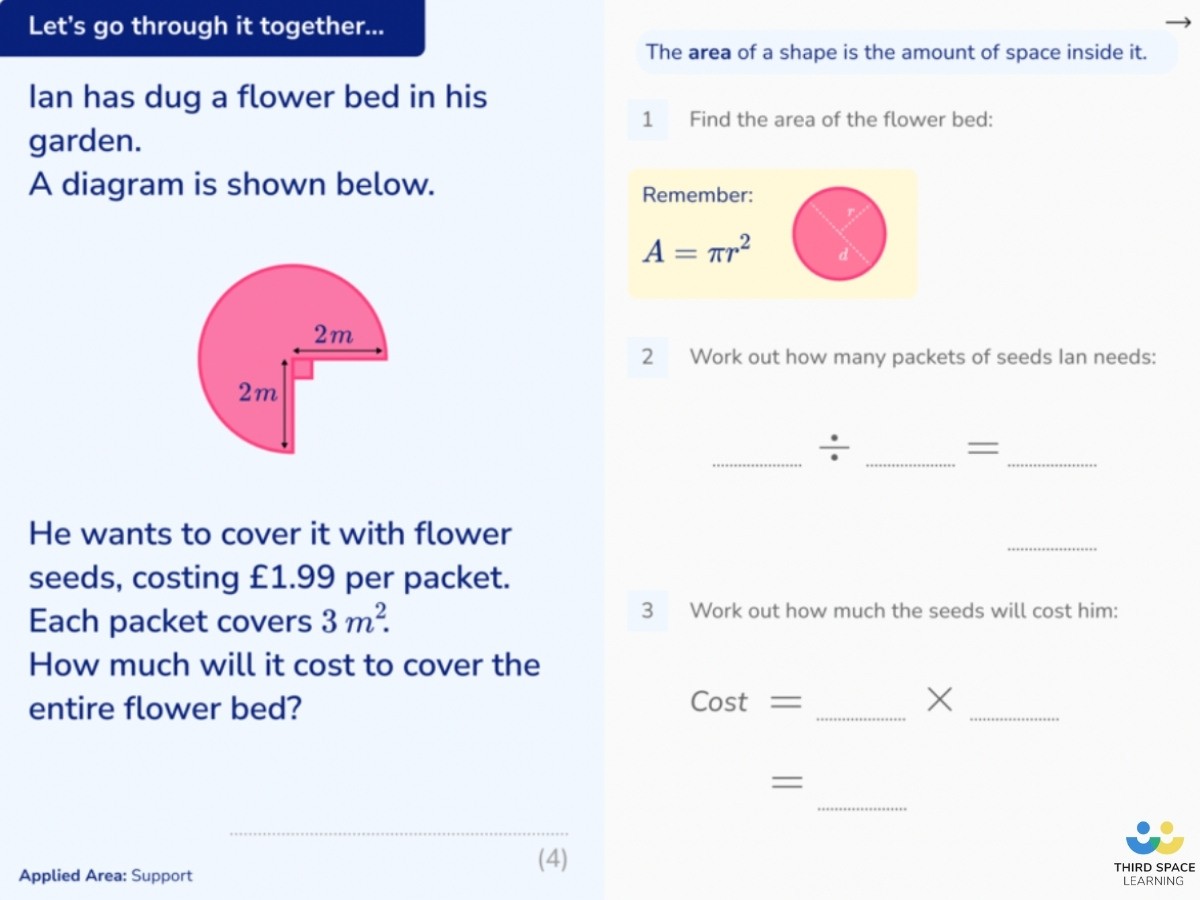
It made them realise that this one session a week isn’t their full revision, it’s just an aspect of it, which led them to revise more.
Andy Appleford, Maths Director, Chorus Education Trust
Giving choices
Independent learning is about giving choices. While most mainstream secondaries won’t be in the position to deliver individually personalised curricula, a degree of autonomy is frequently highlighted as an important feature for developing independence in students.
There are a few practical ways we can allow our students choice in the classroom. I like to employ my favourite toddler behaviour-management tactic and offer choices of pre-selected palatable options – so with a three-year-old, this is “either you can put your shoes on now, or I will put them on for you in ten minutes”, whereas with a class of Year 9s, this might be offering two different strategies for completing a revision homework.
Planning final revision with students at the end of Year 11 is a great opportunity to give students choice – by this point, at least some of them have their own ideas about what they want to work on further and how to revise in a way that works for them.
However, there’s no reason this process can’t be modelled and developed earlier down the school years, giving these skills more time to bed in before they’re really needed in GCSE study.
There’s usually class time built in for revision before milestone assessments – encourage students to self-assess which topics they need to revisit, produce a short-list of their learning goals and vote as a class on the best way(s) to use that teacher-directed time.
Collaboration and involving students in planning
A key feature of independent learning is the ability to plan workload and time management, but students won’t learn how to do this unless they’re given the opportunity to do so.
Initially, we can model our thought processes in planning a sequence of lessons, make explicit how topics are interconnected and discuss with students how they’ll know whether they’ve learned the content and been successful. This gives students an idea of the direction of travel and encourages more active involvement.
Once students are used to this process, we discuss strategies that they (as a class) find effective and incorporate these in, essentially offering an element of personalisation. They’ll likely need some steering here initially to ensure that they’re choosing effective strategies and not just the easiest options – again we can offer some approved options instead of giving free rein.
The biggest impact of Third Space Learning was showing pupils that we care about them and that they’re important enough to put on something like this; we think it’s worth them spending that time revising because we care about what they’re going to get.
Andy Appleford, Maths Director, Chorus Education Trust
Scaffold opportunities for success
Students need to be convinced that developing independent learning skills is worth doing, as learning independently requires significantly more effort than relying on someone else to plan your workload and direct you to the tasks you need to complete.
Furthermore, we can’t expect students to naturally be good at it, because plenty of their school career actually involves them developing skills counter to those of independent learners – so it’s no good expecting sixteen-year-olds to be able to plan an effective revision timetable when they’ve had no opportunities to practise.
However, we can give students opportunities to be successful with independent learning when carefully scaffolded. For example, flipped learning (students are presented with the teaching material outside the classroom, with class time used for problems and misconceptions) was a big thing a few years ago, and I still reckon that flipping an occasional homework is a really effective way of encouraging a little bit of independence.
Careful topic selection is really important – I’d pick something that I knew they’d seen before, but were rusty on (such as revising area of a circle before learning area of a sector), rather than a completely new topic. Depending on the class, you could direct them to a couple of specific websites or videos, or allow them to select for themselves. Adjustments may also need to be made for setting-specific factors, such as access to devices or workspaces.
As well as discussing the content covered, the class can also review what strategies they used and any issues they came up with, building a collaborative toolkit of independent research skills to use in the future. Teachers can prompt discussion with effective questioning.
Self-monitoring and self-regulation
These two related skills also need scaffolding for students. Here it can be really powerful to enlist support to hold them to account – so students might ask a friend or parent to check up on them every so often to make sure they’re sticking to a revision plan, for example.
If students have developed an independent study plan, discuss their targets with them. Help to refine these if necessary.
We can model the process of breaking a more complex project or task into chunks, and then set goals for intermediate sections of the project. Arguably students have more opportunities to practise these skills in humanities than in maths and science, where extended projects and essays are rarer, but this kind of support may be useful when planning long-term revision strategies.
Read more: Evidence Based Teaching Strategies
Independent learning: Tips to make it more successful
- Be explicit – teach students how to learn, not just what to learn;
- Model your thought processes when working on unfamiliar problems;
- Encourage discussion of how students learn – employ principles from metacognition;
- Offer a degree of choice – help students to assess and select suitable learning materials;
- Encourage a degree of collaborative planning and autonomy;
- Scaffold towards independence – build opportunities for success.
Read more: Metacognition in the classroom
Independent learning is important because it allows learners to take responsibility for their own learning, select appropriate learning strategies, plan, monitor and evaluate their learning pathways or revision strategies.
Independent learners are proactive, can make informed choices about their learning, are able to self-regulate and self-motivate, and can apply metacognitive strategies to reflect on and discuss their learning.
The phrase independent learning is sometimes used to refer to tasks completed independently by learners (such as classwork or homework). However, independent learning covers a range of skills useful for learners to be able to motivate, regulate, make informed choices and discuss their learning.
DO YOU HAVE STUDENTS WHO NEED MORE SUPPORT IN MATHS?
Skye – our AI maths tutor built by teachers – gives students personalised one-to-one lessons that address learning gaps and build confidence.
Since 2013 we’ve taught over 2 million hours of maths lessons to more than 170,000 students to help them become fluent, able mathematicians.
Explore our AI maths tutoring or find out about maths tuition for your school.
